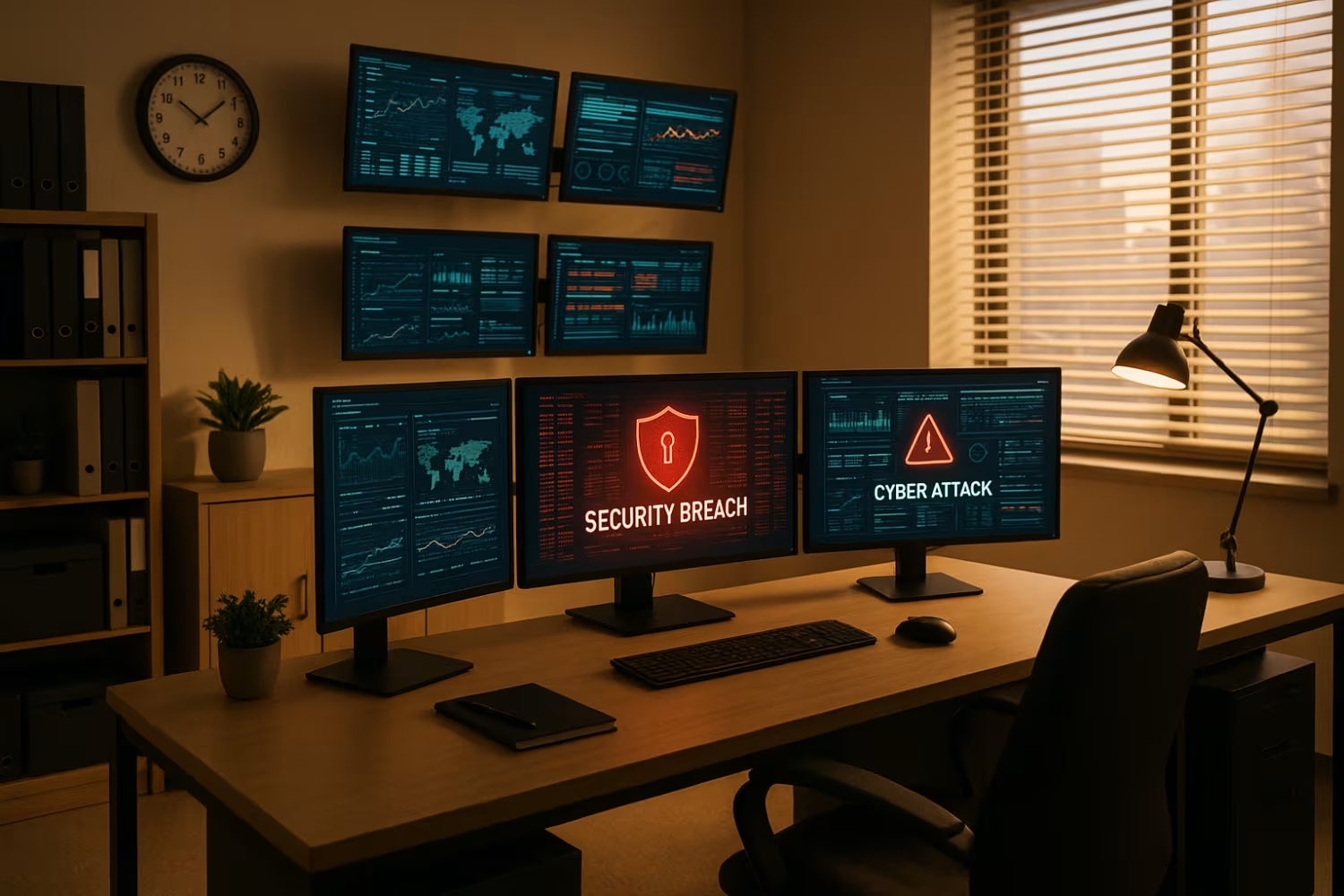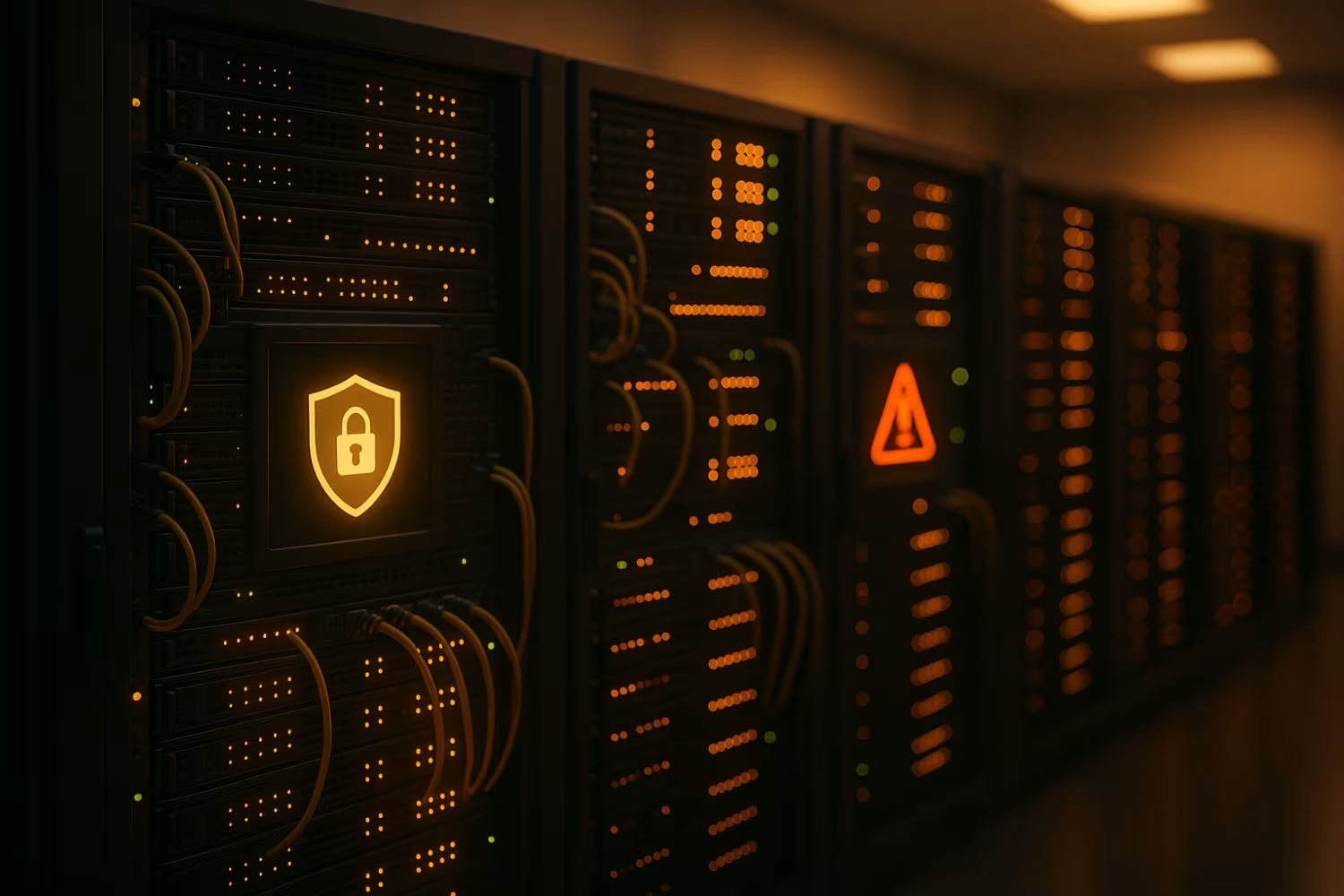.webp)
Chief Executive Officer

Cybersecurity is a growing concern for businesses of all sizes. With the rise in digital operations, companies face increasing risks from cyberattacks, malware, and phishing schemes. Understanding what are the most common cybersecurity threats for businesses is essential to protect sensitive information, maintain operations, and avoid financial losses. This blog will explore key cyber security risks for businesses, including insider threats, ransomware, and supply chain vulnerabilities. We'll also cover practical steps to improve your security posture and reduce exposure to cyber threats like DDoS attack, phishing attack, and SQL queries.
Cybersecurity threats come in many forms, and they often target weak points in a business’s digital infrastructure. These threats can lead to data breaches, financial loss, and damage to a company’s reputation. For small and mid-sized businesses, the impact can be especially severe due to limited resources.
Common threats include phishing emails that trick employees into revealing login credentials, malware that infects systems to steal data, and ransomware that locks files until a payment is made. Each type of attack exploits a specific vulnerability, making it important to understand how these threats operate and how to defend against them.

Cyber threats are constantly evolving. Below are several types of cyber threats that businesses should be aware of and prepared to handle.
Phishing attacks use fake emails or websites to trick users into giving up sensitive data. These emails often look legitimate and may appear to come from trusted sources. Once a user clicks a link or downloads an attachment, attackers can gain access to systems or steal data.
Malware includes viruses, spyware, and trojans designed to damage or disrupt systems. These programs can execute harmful actions like deleting files, stealing information, or monitoring user activity without permission.
Not all threats come from outside. Insider threats involve employees or contractors who misuse their access to steal data or cause harm. Sometimes this is intentional, but it can also happen through negligence or lack of training.
Attackers may target third-party vendors or software providers to gain access to a business’s network. These supply chain attacks are harder to detect because they exploit trusted relationships.
Ransomware encrypts files and demands payment for their release. These attacks can shut down operations and result in significant financial losses if backups are not available.
A distributed denial-of-service (DDoS) attack overwhelms a website or server with traffic, making it unavailable to users. While not always data-focused, these attacks can disrupt business operations.
Social engineering attacks manipulate people into revealing confidential information. This can include impersonating IT staff or using fake scenarios to gain trust and access.
Business IT teams must stay ahead of threats by understanding the most common risks and how to respond. Here are some key concerns:

Cybersecurity professionals play a critical role in defending against cyber threats. They monitor systems, respond to incidents, and implement security measures that reduce risk. Their expertise helps businesses stay compliant with regulations and avoid costly breaches.
These professionals also evaluate new technologies and ensure they meet security standards. By staying current with threat trends, they help businesses adapt and remain secure.
Understanding the different types of attacks helps businesses identify and respond quickly. Below are common attack methods and how they operate.
Attackers use brute force or phishing to steal login credentials. Once inside, they can move laterally through the network.
These attacks insert malicious SQL queries into input fields to access or manipulate databases. Poor input validation is often the cause.
Zero-day exploits take advantage of unknown vulnerabilities. Since no patch exists, they are highly dangerous and require advanced detection tools.
Users unknowingly download malware by visiting compromised websites. Antivirus software can help detect and block these threats.
In these attacks, hackers intercept communication between two parties to steal data or inject malicious content.
This type of malware operates in memory and leaves no trace on disk, making it harder to detect with traditional tools.
As more employees use mobile devices for work, these become targets for malware and data theft.

A strong cybersecurity strategy includes multiple layers of defense. Here are key features to consider:
Small businesses often lack the resources of larger firms, but they can still take meaningful steps to reduce cyber security risks for businesses. Simple actions like updating software, using antivirus software, and training staff can make a big difference.
Working with a managed IT provider can also help. These experts offer guidance, tools, and support tailored to your business’s needs. They can monitor systems, respond to incidents, and ensure compliance with industry standards.
Cyberattacks can cause downtime, data loss, and reputational damage. Below are common types of cyberattacks and their effects.
Phishing attacks can lead to data breaches or financial fraud. They often target employees through email, making training essential.
Malware can slow systems, steal data, or allow unauthorized access. Regular scans and updates help prevent infections.
Insider threats may involve data theft or sabotage. Monitoring user activity and limiting access can reduce this risk.
A compromised vendor can introduce malware or backdoors. Vetting partners and monitoring access is key.
Ransomware can halt operations and demand payment. Backups and incident response plans are critical.
These attacks trick users into giving up sensitive data. Awareness training is the best defense.
Improving cybersecurity doesn’t require a complete overhaul. Start with basic steps like enforcing password policies, enabling firewalls, and updating all systems regularly. These actions reduce the chance of a successful attack.
Next, assess your current security posture. Identify gaps and prioritize fixes. Consider using tools that monitor for unusual activity or unauthorized access. Finally, test your incident response plan to ensure your team knows what to do in case of a breach.
Following best practices helps businesses stay protected. Here are some to consider:
Staying proactive can help protect your business from the most common threats.

Are you a business with over 10 employees looking to strengthen your cybersecurity? Growing businesses face more complex threats and need reliable systems to stay protected. Whether you're expanding your team or adding new tools, it's important to secure every layer of your operations.
At AJTC, we help businesses identify and address what are the most common cybersecurity threats for businesses. Our team offers expert guidance, monitoring, and support to reduce your risk and improve your defenses. Contact us today to learn how we can help protect your business.
Preventing cyberattacks starts with strong security measures. Use antivirus software, firewalls, and multi-factor authentication to protect your systems. Train employees to recognize phishing attempts and avoid clicking suspicious links.
Regular updates and patches also reduce vulnerabilities. Businesses should monitor for unusual activity and respond quickly to threats. These steps help reduce the risk of malware and unauthorized access.
To reduce insider threats, limit access to sensitive data and monitor user activity. Make sure employees only have access to the information they need for their roles.
Provide regular training on cybersecurity threats and company policies. This helps prevent accidental data leaks and reduces the chance of malicious actions by insiders or contractors.
The best defense is employee awareness. Train staff to spot phishing emails and avoid clicking unknown links or attachments. Use email filters to block known threats.
Implementing multi-factor authentication adds another layer of protection. Even if login credentials are stolen, attackers can’t easily gain access to systems.
Ransomware locks your files and demands payment to unlock them. This can halt operations and cause major financial losses, especially if backups are unavailable.
Businesses should back up data regularly and test recovery plans. Antivirus tools and employee training also help prevent ransomware infections.
Supply chain attacks target vendors or software providers to reach your systems. Small businesses may not have the tools to detect these threats early.
Vet all third-party partners and monitor their access. Use cybersecurity best practices to reduce the risk of these indirect attacks.
Cybersecurity professionals help identify risks, monitor systems, and respond to incidents. Their expertise is essential for preventing data breaches and cyberattacks.
They also ensure compliance with regulations and help businesses stay ahead of evolving threats. Investing in their support can greatly improve your security posture.